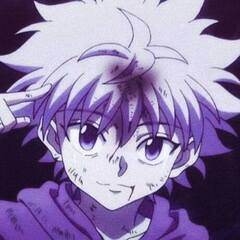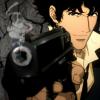Upgrade from Nikon D5300 for Budget Vids
Hey! Happy to assist in finding the next camera for you. The Nikon D5300 is a great DSLR for 1080p video, so if we are upgrading from there I assume you want a smoother workflow and some more modern features to make everything streamlined. Also don't feel bad about your current setup, there's nothing wrong with using freeware or other hardware to achieve your end goal. A lot of people can get "gear envy" where they are constantly looking to upgrade and and chase the next big thing with the downfall of their wallet and then not learning the tools they have at their disposal. Time for some knowledge breakdown since you mentioned getting overwhelmed with the massive amount of options. These are the main things you are going to want to worry about and look into.
Looking at your video samples and what you said, biggest thing to start with is knowing what lenses you have. Since you have a Nikon body, I would assume you're using at least one Nikon F mount lens (kit lens probably?). Generally lenses can get pretty expensive, a lot of the time costing significantly more than the body itself! In the video world, general rule is if you're staying with the same ecosystem, you invest in your lenses first and body second. There will always be a new camera body after yours is obsolete, but lenses you can always use as long as the mount is the same or you use an adapter. Because of this, I would recommend staying within the Nikon DX ecosystem so that you don't have to spend more money on a body AND a lens (unless you were looking to upgrade both, again only going off the information I have so far). Nikon moved over to the Z mount with their mirrorless cameras, so for DSLRs you want to stick with DX F mount lenses for your current setup. Something like the Nikon D7500 can go for as little as $350 on Ebay used or new for just under 1k. This would mean you would keep your existing lens but upgrade the body which is capable of 4K shooting.
Another path you could go is instead of upgrading the body, you could upgrade your lens! Like I mentioned, the D5300 is a great 1080p video DSLR, and besides 4K shooting and a bit better low light performance, the D5300 has a lot of features that could be ideal for you (flip out screen, microphone jack, hdmi out, etc.). A lens can make a big difference in an image. Think of a lens like your camera's eye. Everything that we see goes through it, so the quality of the lens can make a direct difference in the image we see at the end. Without knowing your current lens setup I can't recommend anything specific right now, but I can provide some insight into something you talked about that is affected by the lens you use.
You talked about the halo effect to blur the background. That is called bokeh and related to your depth-of-field. On your lens and screen when the camera is on you should see something called an f-stop. If it's a kit lens, it's most likely something like f/3.5-f/5.6, f/4, f/2.8, etc. Simply what that number means is how big or small the aperture/iris is on the lens, aka the size of the hole that lets light pass through the lens. The smaller the number, the more wide open and thus more light can come into the lens (think f/2.8 being a larger hole and letting more light in than f/8). I bring this up because the size of the aperture determines how deep your depth-of-field is. The more wide open your lens is (f/2.8) the thinner your depth-of-field is. This is what that halo blurry background effect is, it's a thinner depth-of-field meaning you were in focus but everything behind you was out of focus! So, if it is the kit lens like I'm assuming, it means that it most likely is a variable aperture (like f/3.5-f/5.6) meaning when your lens is at its widest focal length (ex. 24mm on a 24-55mm lens) then you will have the option of opening up to f/3.5. If you zoom in at all, your aperture range decreases so you can only open up so much (think if you zoomed in to 55mm you'd only be able to go down to an f/5.6). Your focal range can help with your depth-of-field too, which is why with your 100-300mm lens you were probably getting a lot of bokeh even though it was at f/5.6 most likely. If you were to upgrade you lens and wanted to maintain that appearance, a good place to start would be one with a wide fixed aperture like f/2.8. Zoom lenses are going to cost significantly more with a fixed aperture at that range compared to a variable one, so if you know your setup and what focal range you shoot at, it could be beneficial to get a fixed focal lens at that range. (If you look at your current setup and what the focal number on the lens is at when you're all set up, I can get a better idea and maybe recommend something more in depth). Without knowing more info, I can only broadly recommend something like a Nikon Nikkor AF-S 28-70mm f/2.8 purely because of the focal range and aperture range. Beware though, there are multiple versions of this lens and you'd want one that is compatible with Nikon F Mount, APS-C sensors.
Something else that might help improve you recording is some lighting. I'm not sure what your current lighting setup is, but it actually looks relatively good! No harsh shadows, evenly lit, etc. If anything I would say it might be a bit flat on you vs. the background, so maybe moving your main light to focus primarily on one side of your face so that you have some dynamic shape with the shadows and the highlights (think something like this, aka a 2:1 ratio https://theslantedlens.com/wp-content/uploads/2017/05/Ratio-2to1-5269.jpg). If your lighting setup is currently not ideal and you're looking to upgrade, that is also something we can talk about once I know the size of the space you're dealing with. Lighting can change your entire look completely, so good lighting can go a LONG way for a video.
If we are looking into further streamlining your recording setup, you said you're currently using a Blue Yeti mic for recording sound. It does sound pretty clear which is great! What would be nice though is being able to skip that step entirely, and record in camera to remove the need of syncing your sound. That doesn't mean recording using the built in mic on the camera which doesn't sound good, it means using the external mic jack on the camera though as an input for what's called a lavalier mic. This would be a mic that you put on your body, that could then go into the camera directly. Something like the RODE Wireless Go II could work well for you, as it has a wireless transmitter and receiver that you'd plug into the camera itself for audio. They have built in mics already but they can take external mics which would be a small capsule that you'd run up your shirt and pin at the top or hidden under your shirt (think what LTT uses). Once plugged in, it could avoid the need for syncing after the fact!
I know that was A LOT of information dumped on you so I hope it didn't make things worse.
TLDR - If upgrading your camera body, stick with something like a Nikon D7500 so you can keep your (presumed) existing lens. Alternatively if you keep the D5300, you could upgrade your lens to achieve the halo background effect you want. You could also upgrade your lighting by changing the setup and adding some lights which we can discuss once I know your space. You can also streamline your audio workflow by adding a lav mic going directly into the camera.
Hope I helped, and please feel free to ask any questions!



















Create an account or sign in to comment
You need to be a member in order to leave a comment
Create an account
Sign up for a new account in our community. It's easy!
Register a new accountSign in
Already have an account? Sign in here.
Sign In Now